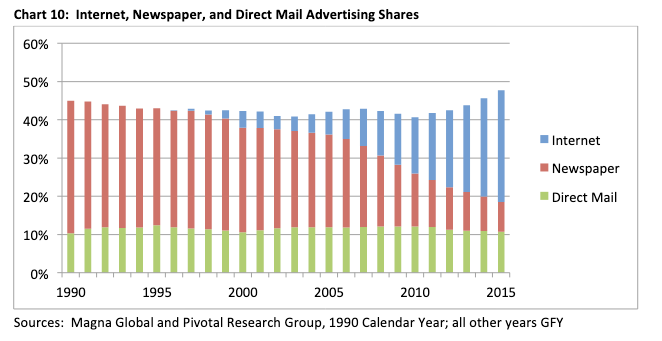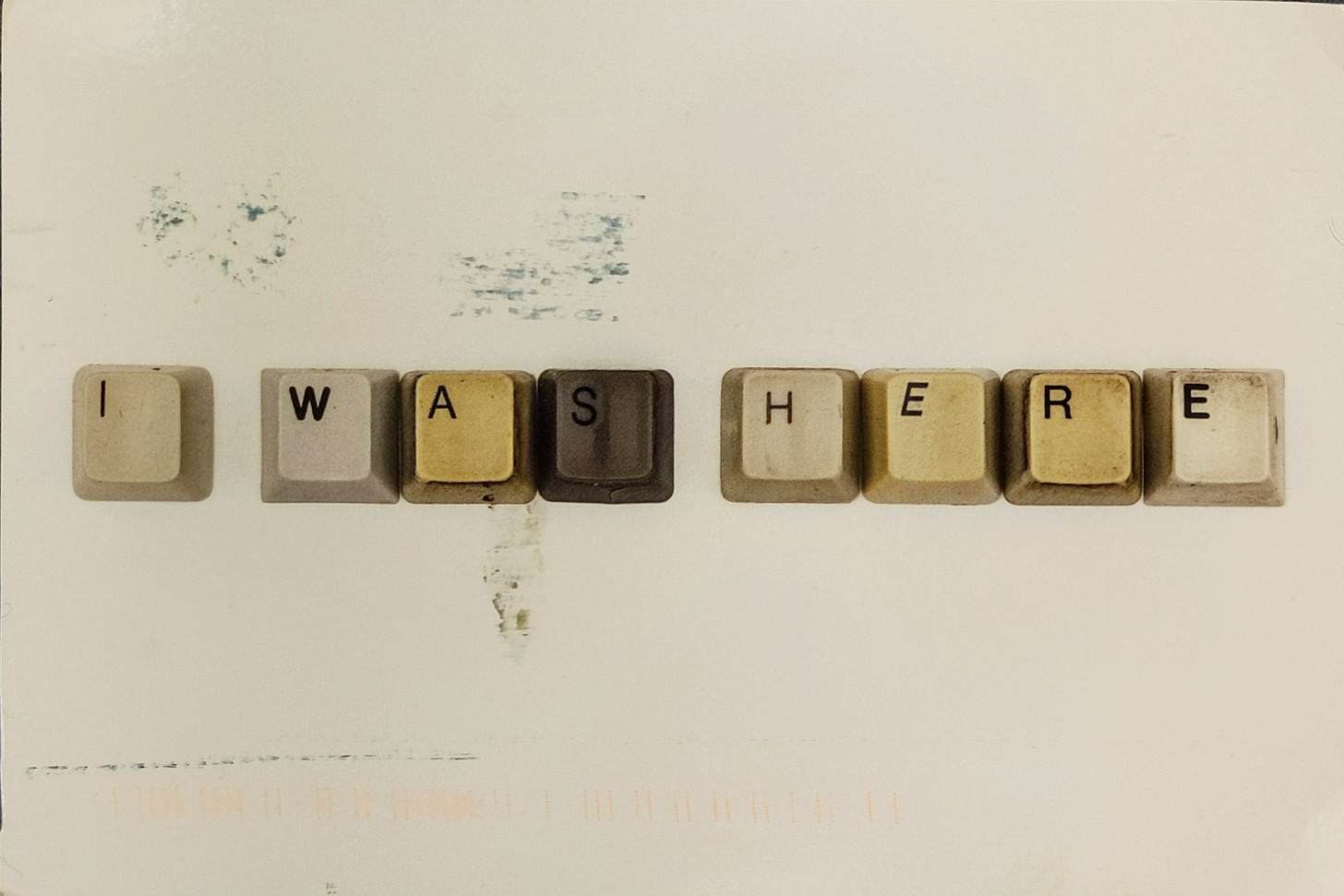How We Ended Up With All This Junk Mail
Believe it or not, this pop-up newsletter only has about a month left! We're getting close to sending out the second zine—more on that next week—and mapping out the rest of the newsletter.
One thing we definitely want to do is a mailbag to answer some questions you have. Of course, this being The Mail, all questions will have to be mailed in either via postcard or letter. So please start sending in those questions!
VICE Media c/o Aaron Gordon
49 S 2nd St.
Brooklyn, NY 11211
On Thursday, actor Wayne Knight reprised his role as one of the most famous fictional postal workers in television history to encourage Americans to vote Donald Trump out of office, in part because of what the Trump administration has done to the postal service.
In the video, Wayne Knight does Newman-esque things like talk very loudly and act piggishly. He also does some very un-Newman-like things, such as profess the sacred role the post office plays in American life generally and elections in particular.
The latter bit is a pretty jarring shift from anyone familiar with the Newman character from Seinfeld. Newman was, after all, a character that embodied everything wrong with the post office. He once told a coworker to "take your three-hour break," admonished Jerry for doing too good a job at delivering mail because "no one has ever cracked the 50 percent barrier," and told George he called in sick because he doesn't work in the rain. In all, Newman probably did as much to insult the USPS and its workers as any fictional character in American history.
I don't say this to try and #cancelNewman or anything. I grew up watching Seinfeld, a show as pure of a 1990s time capsule as you'll ever find. Nor am I interested in doing a close textual analysis of Newman. After all, this was a sitcom, and typically the jokes about Newman and the mail were at least partially a segment of a larger satire or running joke that wasn't about the post office at all.
Yet, I do think there's something worth highlighting about the way Seinfeld characterized the USPS through Newman as a slovenly, lazy, selfish, yet merry ("He is merry, I'll give him that") mailman. And it is connected to the general idea that the postal service in the 1990s was a purveyor of waste, delivering vast amounts of marketing junk nobody actually wanted.
This was most prominently highlighted in an episode titled "The Junk Mail," in which Kramer decides that he's so sick of junk mail he doesn't want to receive any mail at all anymore.
Kramer is, of course, a hipster doofus, so just because he wanted to do something doesn't make it representative of American attitudes. But in this case, he was onto something, which Newman himself acknowledges. "Of course nobody needs mail," Newman admits through gritted teeth, before cautioning Kramer that he's stumbling onto a larger conspiracy he doesn't want to get involved with.
This newsletter is largely dedicated to the intrinsic value of the postal service, but let's be honest, you've thought about this too. What's the point of getting all this junk in the mail? Who needs it? I know I regularly toss my credit card offers into the recycling and think to myself, what a waste.
The funny thing is, Newman was kind of right. Junk mail is about something bigger, something Kramer couldn't possibly understand. Junk mail proliferates in such astounding volumes not by some accident or some immutable laws of the free market, but because of very clear incentive structures created by the postal service itself and the artificial requirements placed upon it by Congress. In other words, the mind-boggling volume of junk mail is the product of consensus politics that the postal service should have to pay for itself. So, it incentivized the creation of vast amounts of junk.
Like all garbage, there is no single definition of what constitutes junk mail. One person's junk is another person's favorite catalog or important update from their congressperson. As the "direct mail" industry—as they prefer to be called—liked to say, there is no such thing as junk mail. In fact, the industry hates the term so much, they sometimes refer to it as "the j-word."

Gruff the talking goat was a mascot created by a major printing company’s PR department to counter claims junk mail is environmentally bad. Source: 1991 Congressional hearing transcript.
Nevertheless, all but the most stubborn direct mail executive would concede there is such a thing as junk mail. And there pretty much always has been. Long have crooks, swindlers, faith healers, snake oil salesmen, and the like solicited suckers through the post office. Typically, these were neither sophisticated nor large operations. But starting in the 1950s, the direct mail industry both became more legitimate and more prevalent.
Mostly, this was the result of the rise of list-makers, or advertising-adjacent firms whose entire business was creating and maintaining mailing lists. (For more on this fascinating and terrifying industry, I cannot recommend this 1966 New Yorker feature enough, although you'll need to be a subscriber to read it in their archives.) But even then, technological limitations made these lists very labor-intensive to create and maintain. And postal rates, which didn't provide bulk discounts at the time, kept the direct mail industry somewhat constrained.
But that would all change after the Postal Reorganization Act of 1970. It created the modern USPS as a corporatized agency that, by the next decade, would have to pay for itself without any government subsidy while also delivering mail to every American. Pretty quickly, postal executives realized the only way this would be even remotely possible was to both cut costs and increase the volume of mail.
As we discussed in the edition of this newsletter on Amazon and the USPS, the marginal cost of each additional piece of mail is very low, because the USPS already has to deliver to everyone. So the USPS tried to make up its losses with volume. It came up with ways to encourage companies to send more mail.
The biggest increase in junk mail occurred in the 1980s for two reasons. One of those reasons the USPS controlled and the other it didn't.
The thing it did control was postal rates. In 1978, Postmaster General William Bolger instituted one of the most important changes in USPS history. If a company pre-sorted its mail, the USPS would offer it highly discounted postage rates, enabling the company to send a whole lot more mail for the same price. As Devin Leonard wrote in his book Neither Snow Nor Rain: A History of the United States Postal Service, this "spawned the modern direct mail industry."
The second change, which direct mail industry executives like to talk about a lot more than the subsidy they were handed by the USPS, was the technological breakthrough in the computer industry that allowed mailers to do much more sophisticated analyses about who to send what mail to based on ZIP codes, census tracts, income levels, recent purchases, and so on. Much as Google and Facebook would later do, direct mailers could now target ads much more specifically yielding higher response rates which in turn enabled more junk mail to be profitable and therefore worth sending out than before.
How much more mail did this result in? Because of its definitional flexibility, there are various ways to measure precisely how much more junk mail we get now than we used to pre-USPS. Here are a few I've come across:
In 1972, junk mail was roughly 25 percent of all mailpieces delivered. In 1982, that jumped to 32 percent, according to Leonard. In 2019, it was 63 percent.
The number of catalogs sent to US addresses ballooned from 5.8 million in 1980 to 13.4 billion by 1989, a 131 percent increase, a study on the US direct mail industry found.
According to that same study, American homes averaged 4.5 pieces of direct mail per week in 1977. By 1987, they got double that. In 2015, the USPS Inspector General reported each address receives four pieces of advertising mail each day. The Inspector General also found the ratio of advertising mail to personal correspondence each address received per week was 18 to 1. In other words, in the roughly 40 years from 1975 to 2015, American households went from getting 4.5 pieces of junk mail a week to four a day (if you feel like you get much less junk mail than this, it might be because you live in a census tract advertisers don't prize, don't buy a lot of stuff, have bad credit, are young, or have an income below what advertisers think qualifies you to receive lots of junk).
Although direct mail industry executives have argued there is no such thing as unwanted mail, the rest of us would likely disagree. Every year, the USPS releases a Household Diary Study to measure various mail trends. If you really want to nerd out on the mail, then the Household Diary studies are your jam. But, to make a long and nuanced story about the direct mail industry and response rates as brief as possible, about 50 percent, give or take, of so-called "junk mail" is read by the recipient before being thrown out, while about 25-30 percent is discarded straight away (the remaining 20-25 percent is "scanned" or "looked at" or "set aside for later" and you know what I'm not going to interrogate the existential quandary of mail set aside for later but never looked at).
These read rates vary greatly depending on whether the advertising mail is coming from a company you have bought stuff from before, how recently you bought from them, and a host of other factors, but as a broad approximation, about a quarter to a third of junk mail is never even read. By way of comparison, digital marketing executives would be ecstatic with high single digit email open rates.
To those in the mail industry, this and other similar data points are the basis for a phrase I've seen across all different types of studies, documents, and analyses, including the latest Household Diary study: "Ultimately, advertisers send direct mail because it works."
But there are several assumptions hidden in that sentence. Whether an ad "works" is a financial calculus about whether the cost of sending out all that junk mail is equaled or surpassed in revenue the ad brings in. Obviously, that calculus is going to be heavily impacted by the postage rate. So, by lowering the postage rates for junk mail, the USPS drastically altered the calculus to ensure more direct mail "works," ensuring we'd all get a hell of a lot more of it.
As a brief but important aside, it might be tempting to think the internet has reduced the volume of junk mail as marketers often resort to emails instead, but it hasn't. Internet advertising, which was non-existent before 1995, has almost completely cannibalized newspaper advertising while having no impact on direct mail ads. The following chart is from a report commissioned by the USPS Inspector General, and doubles as the only chart you need to see about the state of journalism in the internet age:

That being said, marketing mail has started to decline in recent years—about five percent since 2015—although it's not clear if this is part of a broader decline in mail volume in general or the beginnings of the internet ad industry finally sinking its teeth into the junk mail market. Either way, these numbers make USPS officials and even some postal workers nervous, because many of them are aware enough of the importance of junk mail to the USPS's bottom line that, according to Leonard, some postal workers refer to it as "job security."
In retrospect, the USPS made a devil's bargain with junk mail. It needs masses of junk mail—which is cheap and easy for the USPS to deliver—to even approach breaking even, something Congress decided the post office had to do when it corporatized it because it was the style at the time to equate societal worth with profitability. But, in doing so, the USPS eroded its own image in the public eye. To many Americans, the USPS became akin to an email inbox with no junk mail filter. Gmail is free because it sells your data; the USPS delivers your mail for free because it mostly delivers ads.
In my research, the single document that best illustrated this devil's bargain was the transcript of a 1991 Congressional hearing on the environmental impact of junk mail.
"My office receives complaints on a regular basis from people upset about the quantity of unwanted mail they receive," said Rep. Charles Hayes of Chicago in his opening remarks. "There is a growing perception that it is intrusive, wasteful, and an environmental hazard."
"The perception," he summarized, "is that most mail is garbage."
The bulk of the hearing was dedicated to whether Congress should authorize the USPS to give discount mailing rates to companies that use recycled paper. The direct mailing industry came out strongly opposed. They each argued in turns that there was no waste problem, that they produced much less waste than other industries, that they were already producing less waste than they used to, that actually the paper industry saved trees, and the solutions Congress considered will only create more waste.
"It is critical to let market forces determine what is most economically and environmentally sound," said the Quad/Graphics, Inc. CEO in his testimony. "If the free market is allowed to define the specifics of paper recycling and the creation of economically sound markets for recycled products, it will find the most efficient possible use of resources."
A key logical cog in their argument was that the junk mail volume currently being sent was critical to a fiscally balanced USPS. There wasn't enough recycled paper for all this junk mail, they said, nor were all types of junk mail capable of being printed on recycled paper. Should Congress enact such a law, it would put the USPS in a bind.
The USPS official who testified agreed with the direct mailers. After some obfuscation and indirect wording, Senior Assistant Postmaster General Mitchell Gordon clarified "I don't have an interest at this time in driving volume out of the mail system."
In the decades since, we have become accustomed to the internet rule that if you're not paying for the product, you are the product. It turns out, the USPS has been operating under a similar rule since its inception. Just like the free website that spams you with pop-ups and autoplay videos, the USPS has to make its money somehow. But unlike those websites, the federal government didn't have to stop subsidizing the post office. It wanted to. Junk mail was not an inevitability, it was a choice. It still is.
In a way, bringing back the character of Newman may not be ironic as much as a poetic bookend to the junk mail era. In 2020, many Americans no longer think of the USPS as the deliverer of junk. In fact, we're using a word that means the exact opposite of that. It is "essential." It's nice to think that Newman, of all people, is discovering this too. Maybe he'll even work on rainy days now. If he does, I'll have some Drake's coffee cakes set out for him.
This Week In Mail
Voting by mail isn't so easy when you live in Navajo Nation and don't have a post office nearby.
It's fascinating to see cases where distrust in the USPS is leading to total self-owns: “While Wisconsin Democrats have waged a campaign for months to urge voters to request absentee ballots and return them quickly, the Republican Party of Wisconsin recently sent mail to its supporters urging them to hand-deliver ballots to their local municipal clerks. But in much of Republican-heavy rural Wisconsin, clerks work only part-time, leaving fewer opportunities to return ballots by hand.”
Please, there is no need to disinfect your mail ballot, or mail in general. "In one case, someone even microwaved their ballot in an attempt to get rid of any germs."
I'm no disinformation genius, but it seems to me creating fake ballot drop-off points and promoting them on your own social media channels has at least one critical flaw.
Postcards




Wash hands
Wear masks
Write letters
Aaron

